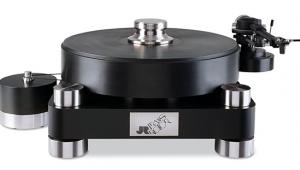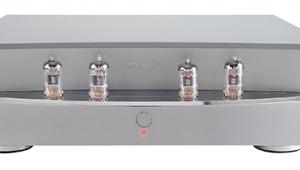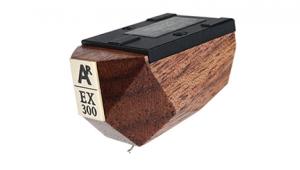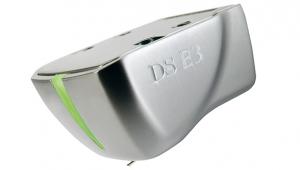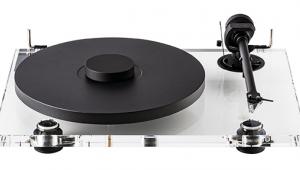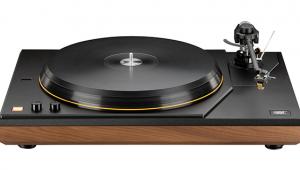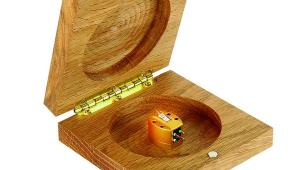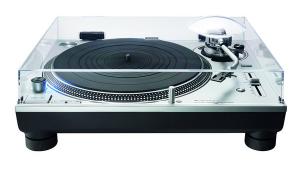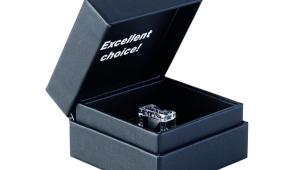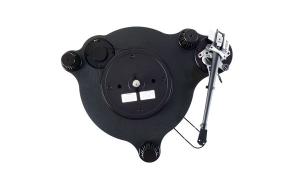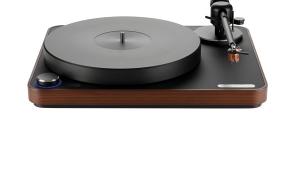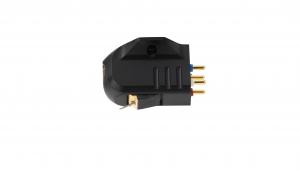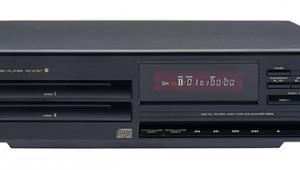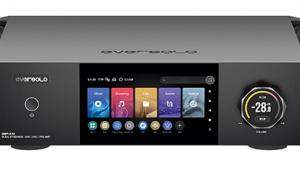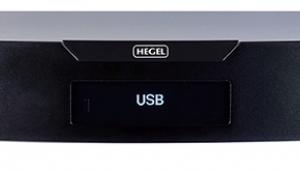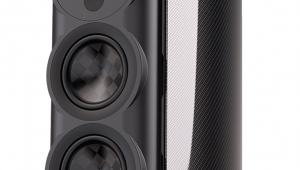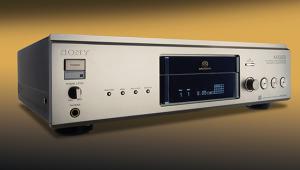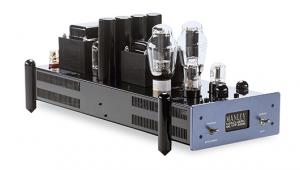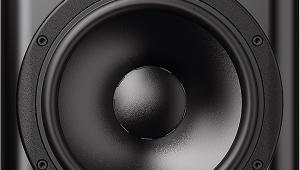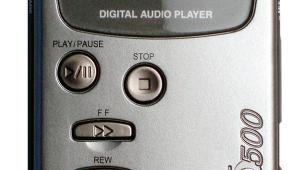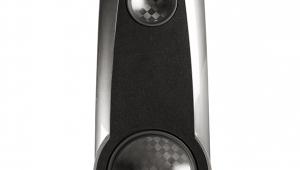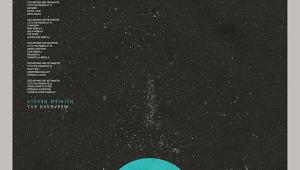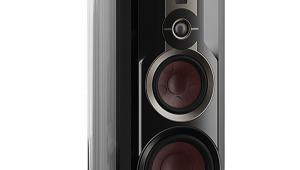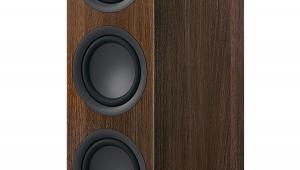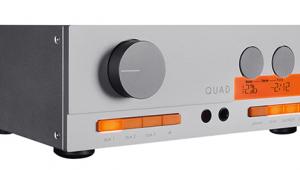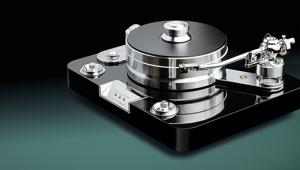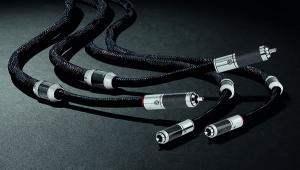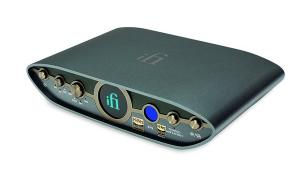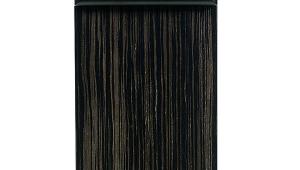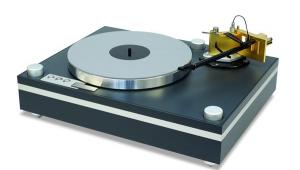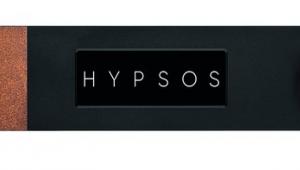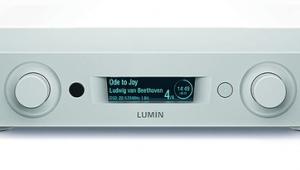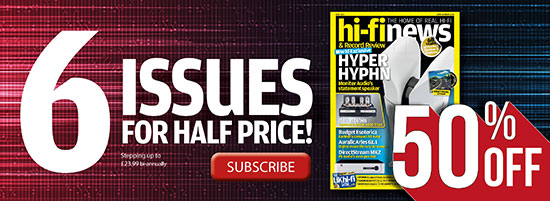EAT Fortissimo/F-Note turntable/arm
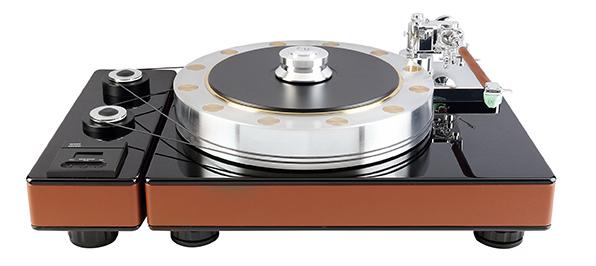
 High style meets high mass in EAT’s flagship turntable, coupled here with one of the most flexible tonearm solutions ever seen – the F-Note even includes an alignment laser!
High style meets high mass in EAT’s flagship turntable, coupled here with one of the most flexible tonearm solutions ever seen – the F-Note even includes an alignment laser!
If anyone doubts we are treated to as much, if not more novelty than back in the day when LPs ruled, EAT’s Fortissimo turntable and F-Note tonearm will put paid to that. Like TechDAS’s vacuum hold-down and air bearing [HFN Jun ’19], or the Reed deck [HFN Apr ’24] available in idler- and belt-drive versions, this EAT combination bursts with clever features.
Before you look at the possibilities, the base Fortissimo/F-Note combination retails for £13,499, but the options are such that you can customise it any way you like. Rather like specifying a new car, you’ll need to sit down with your EAT dealer and tick myriad boxes, with prices on application.
In addition to leather, wood or lacquered finishes – I’ve even seen it in lime green-and-white – there are arm choices to ponder. You can specify chrome or black finishes, an optional platform, an aluminium S-shaped arm with fixed or detachable headshell, or the VT (Variable Tubes) with interchangeable wands including carbon, aluminium or wood. Our review sample is in black gloss with the leather upgrade and F-Note VT with wooden arm tube – it retails for £15,299 plus £699 for the Jo No5 MC [HFN Dec ’18] or +£1599 with a Jo No8 [HFN Dec ’19], normally £899 and £1999, respectively.
Space invader
Our pictures partially illustrate how the Fortissimo will eat (groan...) real estate in your listening room. The total footprint, with the side-by-side chassis separated by a spacer of around 10mm, is a daunting 720x440mm (wxd). The weight, too, begs the need for a decent table or rack: the platter alone accounts for 22kg of the Fortissimo’s 68kg total.

The deck is driven by two silicon ‘string’ belts, each with its own motor, the pair housed in a separate offboard chassis in an attempt to minimise structural-borne vibration being fed to the platter. Using two belts and two motors recalls a horological genre of clocks or watches called ‘sympathiques’, in which two entire balances in the same timepiece cancel out each other’s errors. One thing which didn’t seem to be an issue, then, was speed stability [see PM's Lab Report].
Dominating the Fortissimo’s main chassis is the 400mm platter, its distinctive look created by 12 brass inserts and another under the vinyl top plate. The diameter recalls the era when broadcast decks had to handle 16in records. EAT says the inserts add extra weight, and inertia, to further stabilise the platter. The platter also incorporates sorbothane damping.
It’s a two-person job to fit the platter over the bearing, one hefting the platter and the other guiding it from eye level to ensure that the inverted bearing isn’t knocked. A vertical polished shaft arises from the deck, the bearing block made of a chrome alloy while the bearing spindle has what the company describes as ‘a new “Movic” coating with the lowest friction coefficient possible (six times less than previous spindle versions)’. Apparently, NASA uses it for bearings in satellites. On top is a ceramic ball, against a Teflon plate.

At the front of the motor housing is the combined on/off speed control. Press the soft-touch button once and it reaches 33.33rpm in 25 seconds from cold. Another press takes it to 45rpm, which needs 50 seconds from cold. (I told you this has a heavy platter.) Speed indication is digital and flanking the Fortissimo’s on/off button are fine-speed controls for those who need pitch adjustment.
Armed and ready
Supplied with the deck is a puck weighing 390g. I tried a couple of aftermarket clamps and pucks and – to my delight – the sound really was best with EAT’s own weight. This was evident mainly in the frequency extremes, ie, slightly tighter bass control and crisper transients, and I swear it seemed quieter between tracks. That said, obsessives are welcome to experiment, but I thought I’d save you the effort of trying others.
As for the 12in F-Note tonearm, this is an eyeful which dazzled when it first appeared at Munich’s High End in 2019. On its own, in its huge custom-made box, it looked like something to impress even the most jaded of audiophiles. It also helps you appreciate the size of the Fortissimo’s plinth, because the F-Note’s footprint is a considerable 170x135mm, albeit with a curved section cut out for proximity to the platter. By comparison, a standard CD jewel box is only 143x125mm.
Few are the arms with as much adjustability as the F-Note. In addition to a conventional counterweight and adjustment for overhang, anti-skating and azimuth via assorted screw and fitments, the arm tower houses a laser system which points to spots on the back of the headshell and finger lift, the targets which indicate correct settings. And as you can make adjustments ‘on the fly’, you get to test your hearing against a laser.
Despite those aids, this is not an arm for the faint-hearted because the complexity is such that you will find yourself tempted to make fine adjustments which otherwise would be denied to you on, say, simple counterbalance tonearms such as the Rega RB330 or Linn Krane. Frequent cartridge swappers, take note.
![]() Taste sensation
Taste sensation
Coincidentally, in another deck I had a Jo No5 cartridge identical to the one fitted in the review set-up, so I was able to do side-by-side comparisons, isolating the contribution of the pick-up. It was night-and-day, immediately revealing why this circa £15k package offered £10k’s worth of performance over the other. But this is not about justifying the relative value of upgrades. As a standalone, EAT’s flagship turntable/tonearm set-up proved itself to be way more than a pretty face.

Perhaps it’s down to the powers of suggestion, but I have this odd belief that a massive deck equals massive sound. Usually this means solid, deep bass, and the title track from JJ Grey & Mofro’s Olustee [Alligator AL5018] reinforced my faith. This features relentless, driving, fast-plucked electric bass, what you might expect from Lemmy at Motörhead’s peak, but with bluesy guitar leads over the top for contrast and a voice that doesn’t sound like a deterrent against smoking.
Talk about energy: the force was unremitting, reminding me why I bought DeVore O/93s [HFN Mar ’23]. Extension, slam, convincing attack, graduated decay and every other trait one wants to ascribe to realistic bass were present. Considering that the deck’s designer, the irrepressible Jozefina Lichtenegger, disdains rock music for a diet solely of classical, this deck kicks, er, tush.
That same LP was a fine indicator of smooth male vocals. Despite being on Alligator, which suggests blues-y raunch, Grey’s voice possesses Jesse Colin Young-like clarity, as experienced in the ballad ‘Starry Night’. The treat here was the backing horns, punchy and fast and particularly revealing of soundstage, as they were well behind the vocals.
Zootopia
I’ve recently been reviewing mono albums, so it was interesting to hear how the EAT package dealt with the bedlam of psychedelia piled into the centre. The Tangerine Zoo’s eponymous debut [Sundazed/Mainstream LP5673] provided ample fodder for testing both the solidity of central placement as well as the layering of sound. Instead of a morass of crazed instrumentation, it was almost forensic in the way it allowed the listener to separate massed instruments.
Obviously, a mono album such as the smooth jazz quintet of Kenny Burrell & John Coltrane [Craft Recordings/New Jazz CR00720] didn’t present this challenge. Instead, it tested how full could be the single-channel sound. The Fortissimo/F-Note sounded as imposing as one would want a mono-only masterpiece, filling the stage, and I have no doubt that this aspect is a by-product of the deck having been voiced for orchestras.

An LP which the EAT tonearm and deck handled with such grace made me think of open-reel tape’s transparency. Stealers Wheel’s self-named debut [Intervention Records TR-001] is one of the best-sounding reissues I’ve heard – especially when the tapes are over 50 years old – and as inherently smooth as a 30-year-old scotch from the same turf as the band itself.
Smooth grooves
If there’s anything even remotely negative one could say about this EAT front-end is that it might be too forgiving. Likening it to open-reel is due to the same euphony which, for some, makes valves less fatiguing than transistors. Yet what it does with the hyper-familiar ‘Stuck In the Middle (With You)’ is entice a listener to focus on the vocal – no, make that ‘highlight’ the vocal – but not at the expense of the backing instrumentation. The ease of delivery, the overall seamlessness of the sonic picture are marks of consistency, of coherence.
Might this in part be due to using a cartridge from the same maker, with uniformity of the voicing a given? Out came a Decca Gold and a moving-coil pick-up unlike the Jo No5 – the overall nature remained intact. If ‘forgiving’ is a demerit, I’d take it over ‘aggressive’ any day of the week. And while it’s outside of our remit – you lot only care about sound – the pride of ownership is irresistible. This deck is a delight.
Hi-Fi News Verdict
If anyone understands that high-end audio is (or should be) considered part of the ‘luxury’ universe, it’s EAT. The Fortissimo is far from being as costly as the dearest decks on the market, yet it ranks with the classiest. Fortunately, the sound matches this turntable’s sheer presence, and the F-Note is an ideal arm choice for neurotic cartridge fetishists. At the price, and by today’s measures? A bargain.
Sound Quality: 88%
